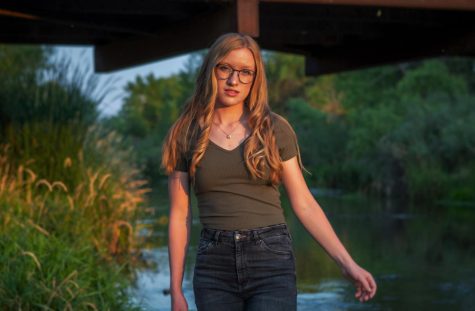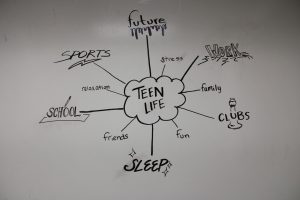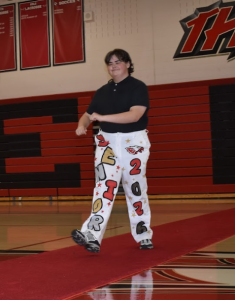Media Literacy Bill
December 18, 2019
Education is often considered the key to a successful society. And as anyone living in today’s world will know, being educated about media is increasingly crucial. Yet media literacy is not something that has been widely actualized in Colorado’s public schools.
Media literacy, the ability to access, understand, analyze, and make use of media, is a skill that many regard as essential to living successfully in today’s world, especially for students. Analyzing and using media is something that nearly every person must do on a daily basis, but for many it’s not a well-developed skill even though it affects their life considerably.
“How much evaluation are we doing when we’re like consuming it in a digital format? To be able to recognize implicit bias?” Kim Torpey, an English teacher, asks bringing up critical questions about how the younger generation perceives information through media.
As the younger generation, nearly 45% of teens say they are online “almost constantly” and 95% have or have access to a smartphone, according to a 2018 Pew Research Center survey. These are statistics that have grown substantially in the past few years and they will likely only continue to grow, making media in schools more important than before.
Representative Lisa Cutter has addressed the concern about the ability -or lack thereof- of examining, analyzing, and understanding media in Colorado schools with her Media Literacy Bill, which was enacted on June 3, 2019. The bill established a media literacy advisory committee within Colorado’s department of education whose recommendations are to be put into effect in K-12 schools.
“If we want people to make educated decisions we have to first educate them on how to make educated decisions,” Cutter says, explaining to Boulder Weekly how media surrounds kids constantly, incessantly. She also emphasizes the importance of properly learning media literacy in the information age.
“The need for critical reading has always been important, and whatever form the reading is in — on a screen, a phone, a book, a handout — that won’t change,” said Jack Kennedy, Executive Director of the Colorado Student Media Association.
The bill in question was introduced in January, passed in May, enacted in June, and the committee has already been working to enact change. The media literacy advisory panel is responsible for submitting a report to the education committees of the two houses of Congress, in which they discuss their findings regarding current literacy in media and make recommendations for the implementation of it from kindergarten through twelfth grade. The members of the committee are appointed by the commissioner of education, and according to the bill, must consist of a variety of teachers, administrators, students, and media experts in order to gather a more fair perspective on media literacy.
Lisa Cutter was drawn into politics because of her desire for creating change. “It’s better to be here than outside complaining,” the lawmaker says in the Colorado Sun, “Because you can’t complain about something and not do something.” As a native Coloradan and a mother of three, Cutter’s advocacy for media literacy represents an important voice in the conversation surrounding media and public education in Colorado. Cutter is joined by Senator Brittany Pettersen in sponsoring the bill, who is also a native Coloradan.
After Cutter and Petterson proposed the bill and it was passed, the advisory committee took over responsibility for its future. Currently, they have not released a report and are working on studying and defining the media literacy needs for Colorado public education. Their work and results will undoubtedly determine the future of how students -including students at our school- interact with media in public education if not also in their personal lives.
For now, we do not know what the committee will want to implement, nor what changes will actually be approved. It could mean anything from hiring extra administrators to teach media, more media classes made available to students, or maybe even required media literacy courses in schools.
Organizations such as Media Literacy Now, which is a leading voice advocating for media literacy education policy by building public awareness and influencing policy about the issue, will undoubtedly push the committee to consider bigger changes rather than simply creating more media literacy information classes. But one thing is definite: media literacy in schools will no longer be ignored. House Bill 1110, Cutter’s Colorado Media Literacy Bill, is proof that education for literacy in media has the potential to become a reality, and that the Media Literacy Now’s work has an impact.
As groups like Media Literacy Now and legislation like Lisa Cutter’s bill grow in relevance, the knowledge of how to examine, analyze, and utilize media will, in theory, follow. Math and English are taught so that it can be applied to students’ lives, but the media is already a part of every student’s life and learning about how to interact with media will undoubtedly gain gravity in society and schools. For now, there is a media literacy-sized gap in education, but Jack Kennedy has hope.
“Perhaps we are just in a transition period, and we will work out new standards of ethics and media literacy and emerge stronger for it,” he says.







